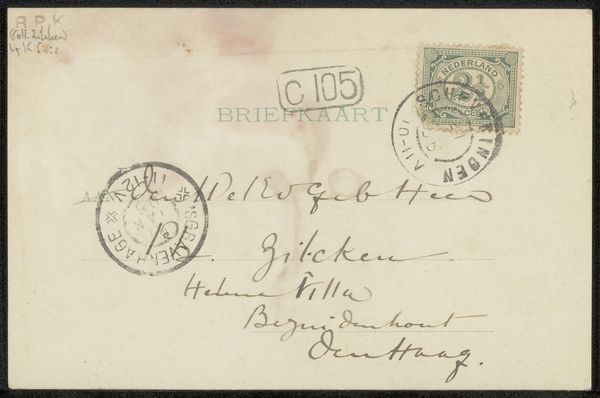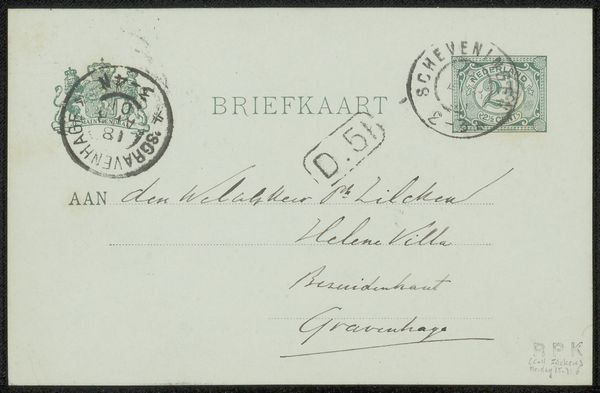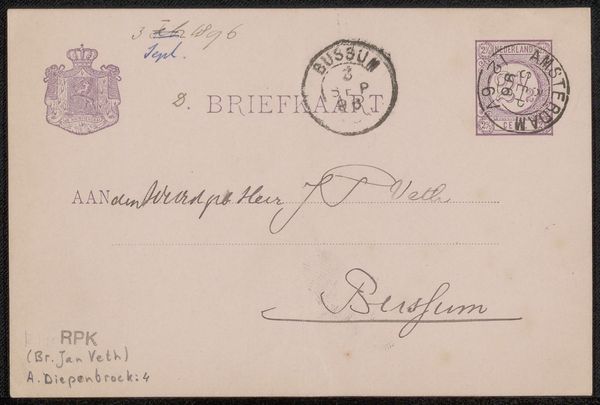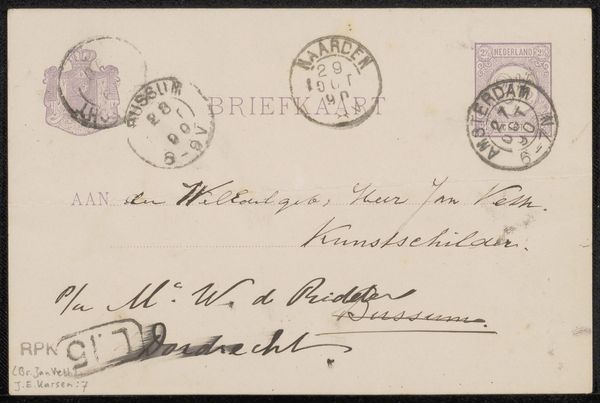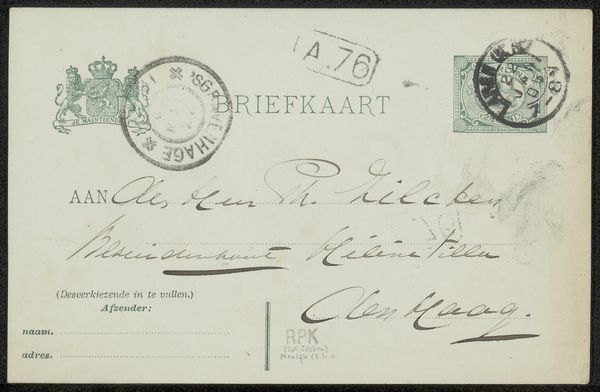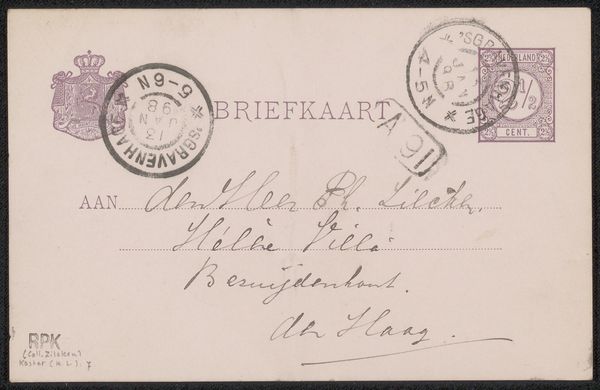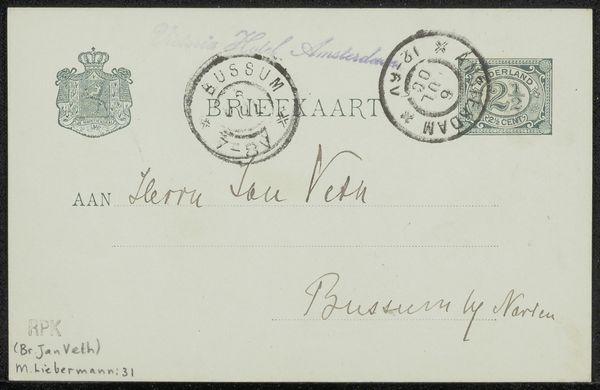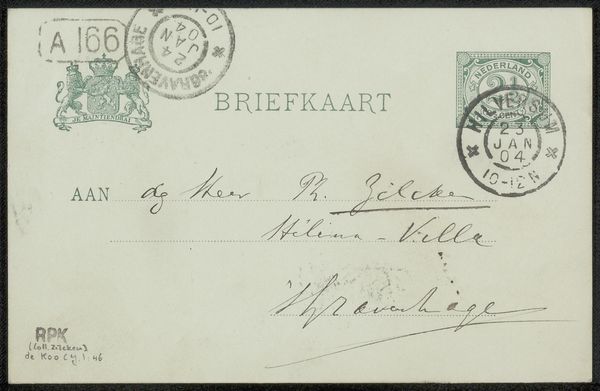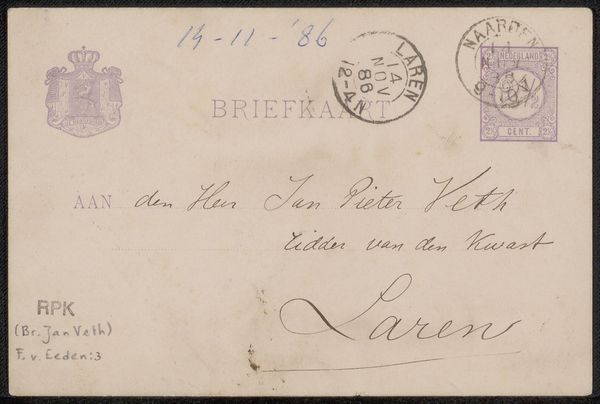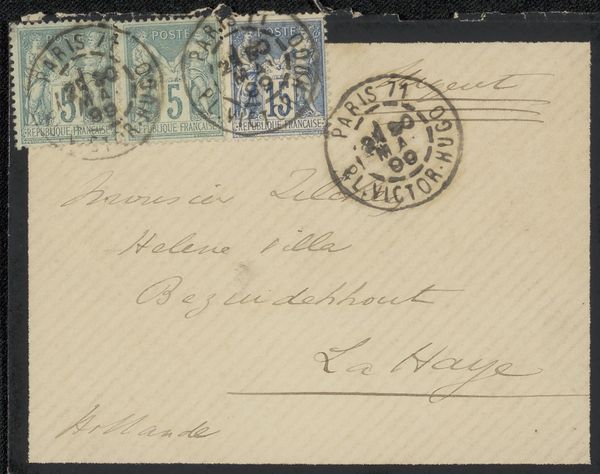
drawing, paper, pen
#
drawing
#
pen sketch
#
paper
#
pen
#
calligraphy
Copyright: Rijks Museum: Open Domain
Curator: This unassuming pen drawing on paper, “Briefkaart aan Philip Zilcken” by Louis van Soest, opens a fascinating window into early 20th-century artistic exchange. Editor: It’s a postcard; you can almost feel its journey through the postal system because it is marked up so visibly. How might this method of communication have shaped the artistic landscape of the time? Curator: Precisely. Before mass digital communication, these tangible exchanges held immense value. The very paper it’s made from—its weight, texture—was carefully considered. Van Soest is not only sending a message, but also participating in a material dialogue with Zilcken, the recipient. Think of the specific inks available then, and the labour involved in producing this everyday object, not to mention its intended purpose. The stamps and postal marks, considered mundane today, reveal distribution networks, economic values, and implicit socio-political structures of the era. Editor: That's true. So it's less about what’s being written and more about the journey of the piece itself? Curator: I would say it is both, actually! I think this approach offers an alternative narrative to traditional art history, moving beyond aesthetics and authorship to the tangible processes involved in creation and communication. We can investigate the accessibility of these materials, such as pen, paper, and ink. By whom they were made, how they are employed for communication in social networks, and, perhaps more crucially, how class and power shape these seemingly mundane communications. Do you think that knowing its provenance could significantly alter how you look at the artwork? Editor: I do! I hadn't thought about this simple communication involving class structure or a social message at all, so I see the postcard differently now. Curator: Exactly, seeing art as intertwined with social history lets us appreciate these often-overlooked aspects.
Comments
No comments
Be the first to comment and join the conversation on the ultimate creative platform.
